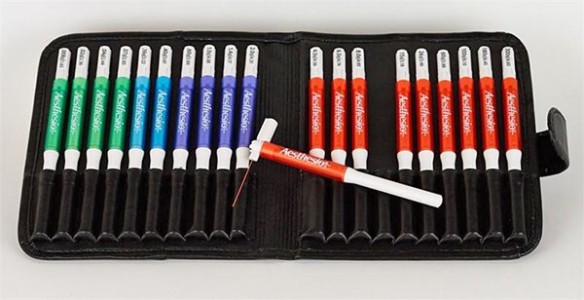Authors
B. Zhang, J. Carroll, J. Trojanowski, Y. Yao, M. Iba et al.
Lab
University of Pennsylvania, Center for Neurodegenerative Disease Research, Philadelphia, USA.
Journal
The Journal of neuroscience
Abstract
Neurodegenerative tauopathies, such as Alzheimer's disease (AD), are characterized by insoluble deposits of hyperphosphorylated tau protein within brain neurons. Increased phosphorylation and decreased solubility has been proposed to diminish normal tau stabilization of microtubules (MTs), thereby leading to neuronal dysfunction. Earlier studies have provided evidence that small molecule MT-stabilizing drugs that are used in the treatment of cancer may have utility in the treatment of tauopathies. However, it has not been established whether treatment with a small molecule MT-stabilizing compound will provide benefit in a transgenic model with pre-existing tau pathology, as would be seen in human patients with clinical symptoms. Accordingly, we describe here an interventional study of the brain-penetrant MT-stabilizing agent, epothilone D (EpoD), in aged PS19 mice with existing tau pathology and related behavioral deficits. EpoD treatment reduced axonal dystrophy and increased axonal MT density in the aged PS19 mice, which led to improved fast axonal transport and cognitive performance. Moreover, the EpoD-treated PS19 mice had less forebrain tau pathology and increased hippocampal neuronal integrity, with no dose-limiting side effects. These data reveal that brain-penetrant MT-stabilizing drugs hold promise for the treatment of AD and related tauopathies, and that EpoD could be a candidate for clinical testing.
BIOSEB Instruments Used
Von Frey Filaments (Bio-VF-M)
Source :

 Pain - Thermal Allodynia / Hyperalgesia
Pain - Thermal Allodynia / Hyperalgesia Pain - Spontaneous Pain - Postural Deficit
Pain - Spontaneous Pain - Postural Deficit Pain - Mechanical Allodynia / Hyperalgesia
Pain - Mechanical Allodynia / Hyperalgesia Learning/Memory - Attention - Addiction
Learning/Memory - Attention - Addiction Physiology & Respiratory Research
Physiology & Respiratory Research











![Dynamic Weight Bearing 2.0 – Postural Module [Add-on]](https://bioseb.com/733-home_default/dynamic-weight-bearing-20-add-on-postural-module.jpg)
























 Pain
Pain Central Nervous System (CNS)
Central Nervous System (CNS) Neurodegeneration
Neurodegeneration Sensory system
Sensory system Motor control
Motor control Mood Disorders
Mood Disorders Other disorders
Other disorders Muscular system
Muscular system Joints
Joints Metabolism
Metabolism Cross-disciplinary subjects
Cross-disciplinary subjects CONFERENCES & MEETINGS
CONFERENCES & MEETINGS 